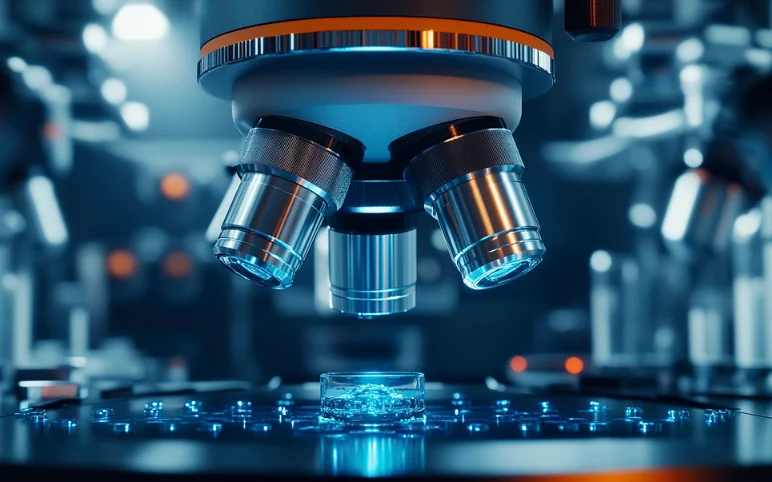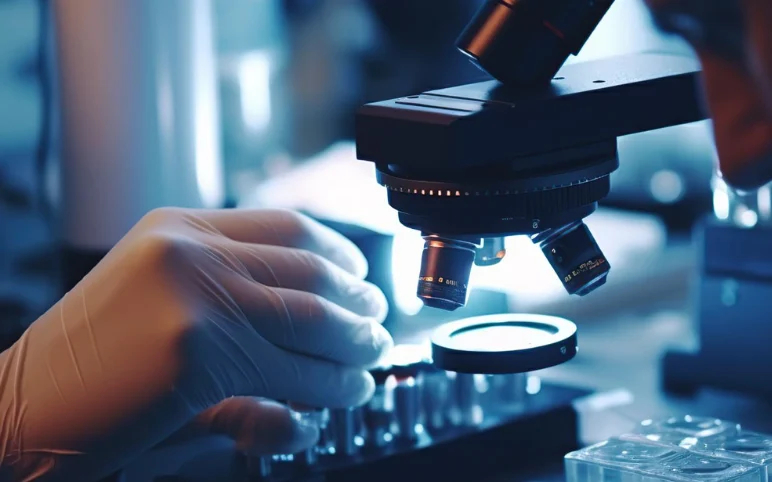Accleus Receives Regulatory Approval from US FDA for Toro-L Interbody Fusion System
On May 19, 2022, the US Food and Drug Administration (FDA) granted the regulatory approval to Toro-L interbody fusion system developed by Accleus. The device is a biplanar expandable lateral implant designed for a minimal insertion profile and to maximize bone graft delivery through the inserter.
The Toro-L interbody fusion system includes a 14mm-wide insertion profile which further expands to the full width of either 21 or 24mm. During the initial launch of the product, the device be offered with a 10-degree lordotic option and during the full commercial launch, the device will be available in 5-degree and 15-degree lordotic options.
The Toro-L interbody fusion system is made via an additive manufacturing process, and therefore it is equipped with 3D-printed endplates with a roughened surface where the implant interfaces with bone. The device is also equipped with an inlet retractor with a feature-rich, split-tube design in order to help surgeons avoid opening of the tube to perform the surgery. It has proprietary disc removal instrumentation along with traditional curettes, rasps, scrapers, kerrisons and pituitaries.
Chris Walsh, CEO and Co-Founder of Accelus mentioned, “Toro-L was designed to offload the pressure on the innervated posterior psoas muscle without sacrificing footprint.” He further added, “Our design team created an implant with a massive footprint that still preserves bony, nerve and ligamentous tissue. We strongly believe Toro-L will obviate many of the clinical challenges seen at the L4-L5 levels in the current lateral market.”
As per DelveInsight analysis, the entry of such devices in the market would help with the possible reduction in the difficulty of carrying out spinal fusion procedures at L4-L5 levels in the coming years. According to DelveInsight’s “Spinal Fusion Devices Market” report, the global spinal fusion devices market is valued at USD 6.49 billion in 2021, growing at a CAGR of 4.55% during the forecast period from 2022 to 2027 to reach USD 8.47 billion by 2027. The rise in demand for Spinal Fusion Devices is primarily attributed to the rising prevalence of spinal disorders such as degenerative disc disorders, spondylolisthesis, spinal stenosis, and disc herniation, among the growing old-age population worldwide; the increase in demand for minimally invasive surgeries. In addition, technological advancements in the product line, and new product launches among others are also expected to drive the global spinal fusion market.
Labcorp Launches New Test for Skin Cancer
On May 19, 2022, Laboratory Corporation of America® Holdings announced the launch of a new test that may help in devising treatment strategies for skin cancer patients.
The new test is devised to measure Lymphocyte-activation gene 3 (LAG-3) expression levels by employing immunohistochemistry (IHC) in tumor tissue. LAG-3 is an immune-oncology target that has been reported to show significant clinical benefit in patients with melanoma. The test is available for use in both- for patient care management as well as in clinical trials as well.
This assay is expected to aid in the analysis of LAG-3 status in the tumor and establishing the correlation between expression status of LAG-3 and response to LAG-3 immunotherapy. This assay is also being used in other ongoing clinical trials evaluating clinical response to LAG-3-directed cancer treatments.
Prasanth Reddy, M.D., MPH, senior vice president and oncology head at Labcorp, said, “Our goal is to provide diagnostic solutions that can help guide the clinical application of new cancer treatments, improving the lives of those living with cancer.” He further mentioned, “The LAG-3 IHC assay provides physicians with actionable information to evaluate the best treatment options, including newly approved treatments and clinical trials, for their patients.”
As per DelveInsight analysis, the development of such diagnostic assays that could help direct the possible treatment regimen in cancer treatment may transform how cancer therapy is administered presently. According to DelveInsight’s “Immunohistochemistry Market” report, the global immunohistochemistry market was valued at USD 2.56 billion in 2021, growing at a CAGR of 7.64% during the forecast period from 2022 to 2027, to reach USD 3.98 billion by 2027. The growing demand for immunohistochemistry (IHC) is predominantly attributed to the rising cases of chronic and infectious diseases such as cancer, hepatitis B virus, herpes virus, among others. Moreover, the rise in approval and launch of various technologically advanced IHC products, and growing implementation of automation and machine learning concepts in the field of IHC, and the increase in research and development activities, among others are some of the factors responsible for driving the Immunohistochemistry (IHC) market in the upcoming years.
SERA Prognostics Reports Publication of Data Exhibiting Enhanced Performance of their Preterm Test
On May 19, 2022, Sera Prognostics, a public company focused on improving maternal and neonatal health by providing innovative pregnancy biomarker information to doctors and patients announced the publication of improved PreTRM® Test performance using women from the Proteomic Assessment of Preterm Risk (PAPR) clinical study whose pregnancy outcomes are aligned with updated ACOG gestational age dating guidelines.
The PreTRM® Test was developed and validated for prediction of spontaneous preterm birth broadly in the U.S. in the Proteomic Assessment of Preterm Risk (PAPR) study. In a subsequent large prospective U.S. study, the Multicenter Assessment of a Spontaneous Preterm Birth Risk Predictor (TREETOP), the biomarkers were demonstrated to be predictive of very early preterm birth of any cause, length of neonatal hospital stay, and neonatal morbidity and mortality.
The published study reported the following results:
- A greater observed sensitivity of 88% at 75% specificity, which represent increases of 17% and 1%, respectively, relative to all subjects
- An improved performance was also observed over an expanded 18-20 weeks’ gestational age time interval for performing PreTRM testing, consistent with the timeframe of routine obstetric visits during pregnancy
- A negative predictive value of 99% for the test, at its validated threshold.
Michael Foley, MD, Sera’s Chief Medical Officer, said, “A PreTRM® Test higher risk result reflects a similar risk as is revealed by traditional assessment techniques, but the PreTRM® Test identifies far more patients who are at risk of premature delivery. Furthermore, the reported 99% negative predictive value of the PreTRM® Test means that women not found to be at higher risk of preterm delivery can have very high confidence of not delivering a premature infant.”
Gregory C. Critchfield, MD, MS, Chairman and CEO of Sera Prognostics, mentioned, “These new data demonstrate substantially improved PreTRM® Test predictive performance over an expanded blood draw window when gestational age is known with more accuracy, as the first and only broadly validated commercially available blood test for prematurity risk is made even more available to physicians and their patients.”
According to DelveInsight analysis, the entry of such molecular tests would massively transform care for infants and mothers. Such tests would help reduce the risk of long and short-term impacts on an infant’s health due to preterm birth. According to DelveInsight’s “Molecular Diagnostics Market” report, the global molecular diagnostics market was valued at USD 10.44 billion in 2021, growing at a CAGR of 9.21% during the forecast period from 2022 to 2027, to reach USD 17.71 billion by 2027. The increase in demand for molecular diagnostics is primarily attributed to the growing incidence of infectious diseases such as the sudden outbreak of COVID-19 and the rising burden of cancers across the globe. Moreover, rapid technological advancement in the molecular diagnostic product arena and increasing demand for point-of-care diagnostics along with rising consumer awareness regarding quick diagnostics, among others are some of the key factors responsible for the molecular diagnostic market growth during the forecasted period.
Endotronix Announces Positive Results from SIRONA 2 in Late-Breaking Clinical Trial Session
On May 23, 2022, Endotronix announced positive data from the SIRONA 2 clinical trial evaluating safety and efficacy of their Cordella™ Pulmonary Artery Pressure Sensor System (Cordella Sensor) in New York Heart Association (NYHA) class III heart failure patients.
The prospective, multi-center trial met all primary safety and efficacy endpoints and resulted in low rates of hospitalization due to heart failure, further validating pulmonary artery (PA) pressure-guided HF management as a standard of care for NYHA class III heart failure patients.
The SIRONA 2 trial which was an open table, single-arm study included 70 patients who were successfully implanted with the Cordella Sensor at seven European sites across Ireland, Germany, and Belgium. The results confirmed a strong safety profile with no PA sensor failures. Out of all the implanted devices, only one device / system-related complication (DSRC = 1.3%) and 0% mortality at 90 days. The Cordella Sensor also met the primary efficacy endpoint wherein the device was compared with the gold standard fluid-filled reference catheter accuracy at 90 days.
Additionally, results also reported a low 6-month HF hospitalization event rate (0.16) with the majority of patients improving their NYHA classification (67.5%). Compliance with daily readings of PA pressure, weight, blood pressure, heart rate and blood oxygen were consistently above 93% over 6 months. Furthermore, appreciable patient compliance with the device was observed as many of them found the system easy to use (94%) and were knowledgeable about their normal range of daily measurements (67%).
Cardiologist Prof. Dr. Wilfried Mullens at Hospital Oost-Limburg in Genk and University Hasselt, Belgium, stated, “In addition to achieving the primary safety and accuracy endpoints, the SIRONA 2 trial demonstrated a consistently high level of patient compliance with daily readings of PA pressure and physiologic data with a strong preference for performing PA pressure measurements from a seated position.” He further mentioned, “The daily measurements provided a comprehensive clinical picture of the patient’s health over time which supported guideline directed medical therapy (GDMT) resulting in excellent clinical outcomes with low heart failure hospitalization (HFH) rates.”
Katrin Leadley, MD, Chief Medical Officer of Endotronix, said, “We are encouraged by the meaningful improvement in patient outcomes the study demonstrated. This expands our clinical experience to a larger population and is a positive precursor for PROACTIVE-HF, our pivotal trial, which is expected to complete enrollment later this year.”
Data from the SIRONA 2 trial was presented in a late-breaking session at European Society of Cardiology’s (ESC) Heart Failure Association (HFA) 2022 annual conference in Madrid, Spain on May 22, 2022.
PROACTIVE-HF is the first global IDE study for PA pressure-guided heart failure management and is currently enrolling patients to further validate the clinical findings from SIRONA 2.
The Cordella System, without the sensor, is available for commercial use in the U.S. and E.U. and is currently in cardiology centers across the U.S. The Cordella PA Sensor is currently under clinical investigation and is not currently available for commercial use in any geography.
As per DelveInsight analysis, such studies and development of products would be beneficial for patients suffering from heart failure in monitoring the condition in heart failure patients as well as helping clinicians devise therapy regimens for HF patients in a remotely. According to DelveInsight’s “Congestive Heart Failure Treatment Devices Market” report, the global congestive heart failure treatment devices market was valued at USD 17.41 billion in 2021, growing at a CAGR of 8.26% during the forecast period from 2022 to 2027 to reach USD 27.96 billion by 2027. The Congestive Heart Failure (CHF) Treatment Devices market is witnessing positive growth owing to the rising incidence of Cardiovascular Diseases (CVDs), a surge in the research and development activities in product development, and increasing incidences of the aging population who are susceptible to these diseases. Moreover, due to sedentary lifestyle and extreme benefits of these devices in heart failure cases during the COVID-19 pandemic and the growing popularity of minimally invasive interventions had further pushed for the demand of these devices, thereby contributing to the growth of Congestive Heart Failure (CHF) Treatment Devices market during the forecast period from 2022-2027.
Anumana’s ECG Pulmonary Hypertension Early Detection AI Algorithm Receives Breakthrough Device Designation by US FDA
On May 24, 2022, Anumana Inc received the Breakthrough Device Designation from the U.S. Food & Drug Administration (FDA) for their artificial intelligence-enhanced, ECG-based Pulmonary Hypertension (PH) Early Detection Algorithm. The algorithm is a precise, non-invasive screening tool that offers an avenue for the unmet need for earlier diagnosis of patients with pulmonary hypertension, which may otherwise go unnoticed until the disease has advanced, delaying treatment initiation, thereby limiting treatment efficacy and adversely impacting patient outcomes.
Anumana’s AI-enhanced ECG algorithm is designed to detect PH at an earlier stage in an easy and safe manner, by leveraging the widespread availability of 12-lead ECGs in primary care, urgent care, and emergency room settings. The AI-enhanced ECG PH Algorithm is enabled by the nference platform, which provides insight from more than 6 million de-identified patient records, including over 8 million ECGs. The product was developed through a collaboration between physicians and data scientists at Anumana, Janssen Research & Development, LLC, and Mayo Clinic.
The device, if approved, will be offered as Software as a Medical Device (SaMD) that would be allowed to be downloaded on a physician’s smartphone, tablet, or computer, or accessed via the Cloud through an Electronic Health Record or ECG Information Management System interface. The algorithm is capable of analyzing the voltage-time data and within seconds provides a prediction of the likelihood of PH, reducing the time between initial symptoms and the first evaluation for PH via targeted cardiac imaging, all with the application of a 12-lead ECG. This early detection algorithm is still in development and not yet approved for clinical use.
Paul Friedman, M.D., chair of the Department of Cardiovascular Medicine at Mayo Clinic, said, “The addition of AI to a standard ECG – a painless, inexpensive, widely used test that is routinely performed – transforms the ECG into a screening tool for PH, with the opportunity to improve outcomes via early detection by guiding appropriate testing.”
Venky Soundararajan, PhD, co-founder and Chief Scientific Officer of Anumana and nference, added, “The FDA’s Breakthrough Device Designation for Anumana’s PH Early Detection Algorithm is one step forward for the field of ECG AI overall, and more saliently, a giant leap forward for PH patients.”
According to DelveInsight’s “Electrophysiology Devices Market” report, the global electrophysiology devices market was valued at USD 6.92 billion in 2021, growing at a CAGR of 9.74% during the forecast period from 2022 to 2027, to reach USD 12.08 billion by 2027. The demand for electrophysiology devices is primarily being boosted by rising prevalence of cardiovascular diseases, technological advancement in product development, increasing geriatric population, sedentary lifestyle, and increasing awareness programs regarding cardiovascular diseases.
Illumina Introduces New Pan-cancer Companion Diagnostic
On May 24, 2022, Illumina Inc. announced the addition of a companion diagnostic (CDx) indication to their CE-marked in vitro diagnostic TruSight™ Oncology (TSO) Comprehensive (EU) test. This single test kit assesses multiple tumor genes and biomarkers to reveal the specific molecular profile of a patient’s cancer. The CDx pan-cancer indication will allow the identification of cancer patients with solid tumors who are positive for neurotrophic tyrosine receptor kinase (NTRK) gene fusions including NTRK1, NTRK2 or NTRK3, and may benefit from targeted therapy with Bayer’s VITRAKVI® (larotrectinib), in accordance with the approved therapeutic labeling. The test has recently been launched in Europe.
TSO Comprehensive (EU) is a comprehensive genomic profiling (CGP) test combines less prevalent biomarkers with more prevalent ones in the same test, using a single biopsy specimen. This helps maximize the chances of the identification of an actionable alteration so that patients can be treated with targeted therapy or enrolled into a clinical trial based on their unique tumor genomic profile. The addition of this first CDx claim specific to NTRK gene fusions which is a rare but highly actionable biomarker helps provide patients harboring this genetic alteration with an opportunity to benefit from larotrectinib, a genomically matched treatment.
Across most solid cancer tumor types, NTRK gene fusions can exhibit a rare prevalence of 0.1-3% and may be difficult to detect as these genes fuse with numerous partners, of which many remain unknown. Most CDx tests are specific to one type of cancer, but the NTRK claim is pan-cancer, enabling TSO Comprehensive (EU) to target multiple solid tumor types and a broad range of known and novel gene fusion partners across all three NTRK genes. This helps maximize the chances of finding actionable information from each patient’s biopsy, to inform treatment with larotrectinib.
Paula Dowdy, Senior Vice President and General Manager of Illumina for Europe, the Middle East, and Africa said, “This CDx claim, developed in partnership with Bayer, is the first of a series under development, building upon Illumina’s broad portfolio of oncology partnerships with industry leaders to advance cancer diagnostics and precision medicine.”
Christine Roth, Member of the Executive Committee of Bayer’s Pharmaceuticals Division and Head of Bayer’s Oncology Strategic Business Unit said, “The CE marking of Illumina’s TSO Comprehensive (EU) assay inclusive of NTRK gene fusion detection for VITRAKVI is an important advance in enabling precision oncology for patients in Europe. Assays that enable precision oncology through comprehensive genomic testing are crucial for informing optimal treatment plans and help to ensure the best possible outcomes for cancer patients. We look forward to continuing to collaborate with Illumina to ensure that more patients are evaluated comprehensively inclusive of NTRK gene fusions.”
According to DelveInsight’s “In Vitro Diagnostics Market” report, the global in-vitro diagnostics market as valued at USD 71.01 billion in 2021, growing at a CAGR of 4.71% during the forecast period from 2022 to 2027, in order to reach USD 93.60 billion by 2027. The in-vitro diagnostics market is estimated to register positive revenue growth owing to the factors such as the rising prevalence of various infectious diseases such as COVID-19, the growing prevalence of various cancers, and increasing cases of hematological diseases, and increasing product development activities with respect to in vitro diagnostics among others.



